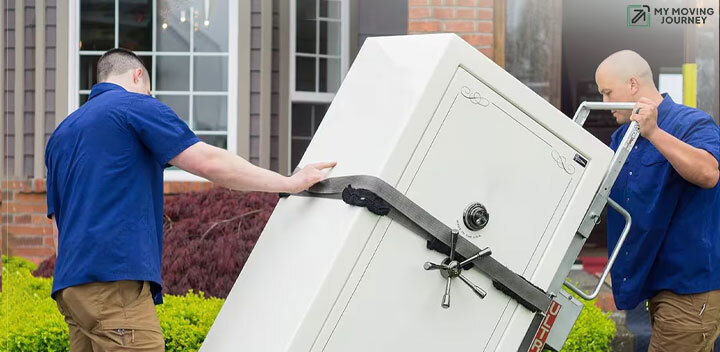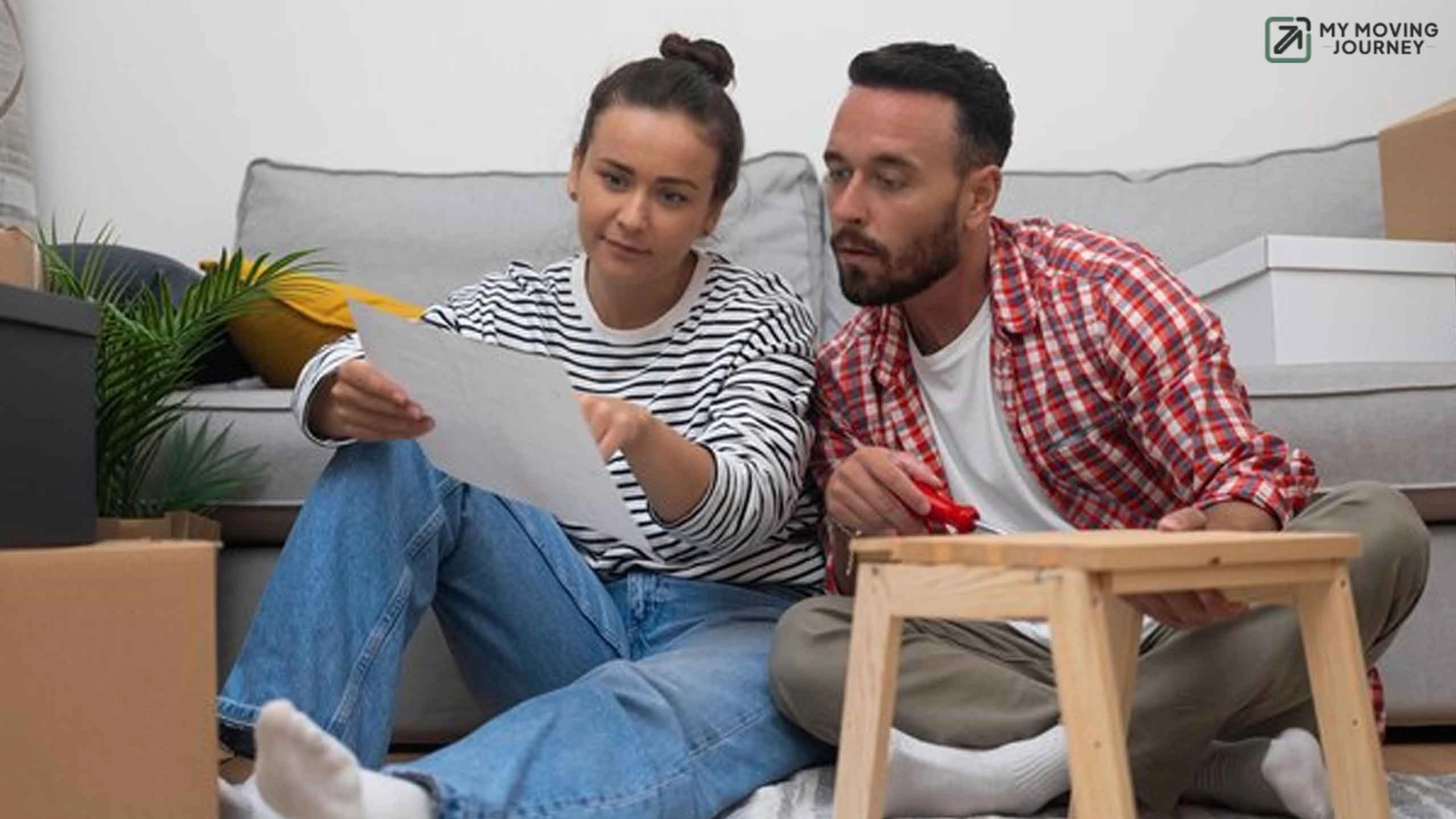Moving itself can be quite taxing on both mental and physical well-being. Moving a gun safely from one location to another is not a walk-in-the-park experience. It requires proper planning and safety measures to relocate a gun safe effectively. A gun safe secures your precious guns and equipment, and while moving, you have to protect the gun safe from any damage.
Whether you are changing your home, rearranging your living area, or just need to shift your gun space, it is compulsory to follow proper tips and preventive approaches. Whenever you are relocating to another space, you always come across heavy and bulky items. For those items, you either call professionals, which is the right approach or due to some budget constraints, you do it by yourself.
Whichever approach you opt for, carrying heavy and bulky items is a troublesome and daunting task, especially when it comes to hundreds or thousands of pounds of gun safes. Let's look at ten well-proven expert tips on how to move a gun safely and proficiently.
Assess the Dimensions and Weight of Gun Safe
When planning to move a gun safely, it is important to assess its dimensions and weight. First, measure the safe’s width, height, and depth. This will help you choose the right moving equipment for the task.
Knowing the weight of the safe is equally important, as these safes are heavyweights due to their sturdy build. Trying to lift it manually might be like carrying a ton of bricks—risking injury and damage. By getting the dimensions and weight right, you set yourself up for a smoother, safer move and avoid any bumps along the way.
| Gun Safe Type | Height (inches) | Width (inches) | Depth (inches) | Weight (lbs) |
|---|---|---|---|---|
| Weight (lbs) | 24 | 16 | 14 | 80 |
| Standard Safe | 55 | 36 | 24 | 350 |
| Large Safe | 72 | 44 | 30 | 600 |
| Extra-Large Safe | 80 | 50 | 36 | 1,000 |
| Large Safe | 72 | 44 | 30 | 600 |
| Extra-Large Safe | 80 | 50 | 36 | 1,000 |
Utilize Right Equipment
Using the right equipment is key when moving a gun safe to keep the process smooth and safe. Because gun safes are heavy and bulky, it’s like trying to fit a square peg in a round hole without the right tools.
Before you start, make sure you have all the essential gear, like heavy-duty dollies, hand trucks, and sturdy straps. These tools help you move the safe without causing damage to the safe or your surroundings. Ensure that the equipment is tough enough to handle the weight of the safe. The bottom line is safety; having the right equipment provides the stability and support you need to safely transport a heavy gun without a hitch.
| Equipment | Description |
|---|---|
| Dolly/Hand Truck | A sturdy dolly or hand truck is essential for moving heavy items like gun safes. Look for one with a high weight capacity and a broad base. |
| Moving Straps | Heavy-duty moving straps help secure the safe and make it easier to maneuver it up and down stairs or over obstacles. |
| Furniture Sliders | Place these under the safe to reduce friction and help slide it across floors more easily. |
| Forearm Forklift | These straps allow you to lift heavy items with less strain, using your body weight and leveraging the straps for balance. |
| Heavy-Duty Blanket | Protects the safe from scratches and dings during the move. Wrap it securely to cushion the safe. |
| Pallet Jack | Useful for moving the safe over long distances on a flat surface, like in a warehouse or garage. |
| Moving Truck | A truck with a ramp or lift gate will help load and unload the safe safely. Ensure it has sufficient weight capacity. |
| Safety Gear | Wear gloves, steel-toed boots, and a back support belt to protect yourself during the move. |
| Winch or Hoist | A winch or hoist can assist with lifting the safe onto a truck or through tight spaces, especially if it’s particularly heavy. |
Call for Extra Hands
You are not a superhero who can move a gun safely on your own. It's important to get extra help, as moving a gun safe is a big task that needs good planning, the right equipment, and enough people.
Ask friends or family to help or hire professional movers if you're doing it yourself. The weight and size of a gun safe require teamwork to prevent injury and damage to both the safe and your property. Assign clear roles to everyone, helping to keep things organized and reduce the risk of accidents. This will help ensure a smooth and successful move.
Are you also moving out of state? Well, here are 8 Best Packing Tips for Moving Out of State.
Empty the Gun Safe
An important step in moving a gun safe is to empty it first. Remove all the firearms, ammunition, and valuable items before you start moving them. This will make the safe lighter and help prevent damage.
Removing the guns also avoids the risk of accidental discharge during the move. Ensure that the firearms and ammunition are stored safely and separately, following the laws and regulations. By properly emptying the safe, you can move them with more confidence and safety.

Owning a gun safe can often lead to discounts on homeowners or renters insurance premiums, as it reduces the risk of theft and damage.
Secure Safe Properly
When moving a gun safely, keeping the doors secure is crucial. Use packing materials to seal the doors so they don't open during the move.
Secure the safe with strong straps and moving blankets, and add extra padding to prevent scratches and dents. Protect the safe from all sides with whatever packing materials you have. Wrapping the safe in moving blankets will create a protective layer and help keep it safe during the move.
Clear Pathways
Moving a heavy and bulky gun requires careful planning to ensure a smooth and safe relocation. Before you start, check the pathways, such as doorways and hallways, and measure any edges and corners.
If you spot any obstacles, remove them to avoid accidents or damage. Plan the move carefully, whether you’re doing it yourself or hiring professionals. If you’re handling it on your own, make sure to follow each step carefully. By clearing the pathways and planning, you'll help ensure both you and the gun stay safe during the move.
Protect Your Floor and Stairs
If you are attempting to move the gun safely from the stairs, it is integral to protect your floor and stairs from protective material to avoid damage and scratches. Gun safes are heavy and bulky, which can damage flooring and stairs and pose difficulties in the moving process.
Safeguard the floors and stairs by placing protective layers like thick cardboard, moving blankets, and rubber mats. These protective materials act as a buffer between the safe and the floor, absorbing all the damage from transportation and keeping the flooring and stairs safe.

Many gun safes have a fire rating that indicates how long they can withstand high temperatures before the internal contents are compromised. This rating is usually expressed in terms of time (e.g., 30 minutes, 1 hour).
Move the Gun Safe With a Dolly
Moving a gun safely can be tough, but using the right equipment and techniques makes it much easier and safer. One effective method is using a dolly. Make sure the dolly is strong and sturdy enough to handle the safe's weight.
Use a heavy-duty dolly or a specialized dolly designed for large items like a washing machine and furniture. These dollies have a strong structure, large rubber wheels, and straps and belts to keep them safe and secure during the move. This setup helps you manage the safe's weight and provides stability throughout the move.
| Aspect | Description |
|---|---|
| Dolly Type | Use a heavy-duty dolly or a special dolly for gun safes that can handle heavy items. |
| Weight Capacity | Make sure the dolly can hold the weight of the gun safe. Check the manufacturer’s specs. |
| Structure | Look for a strong and solid dolly that can carry heavy loads. |
| Wheels | Large rubber wheels make it easier to move and protect floors. |
| Straps and Belts | Use straps and belts to keep the safe secure and prevent it from moving around. |
| Stability | The dolly should be stable and balanced to avoid tipping over. |
| Handles | Strong handles help you move the dolly more easily. |
| Safety Features | Features like wheel brakes help keep the dolly from moving unexpectedly. |
Strap the Gun Safe
While carrying a gun safe on a dolly, it is critical to strap it to enhance security and safety. Due to the bulkiness of the safe, it is mandatory to prioritize the safety of the item and surroundings. Choose a gun-safe dolly that already has straps and belts attached to it. If the dolly doesn't have straps or belts, external straps or belts should be attached to it.
Place straps around the safe and make sure they are rigid enough to hold it firmly. The straps should be placed vertically and horizontally to establish a protective webbing around the safe to avoid slippering or shifting during relocation. This will allow you peace of mind and ensure the safe is secured everywhere.
Inspect the Safe After Moving
Once you have completed all the tips and guidelines properly and moved your gun safe to your desired location, it is essential to inspect the safe. Inspect every corner of the safe to identify any damage or dents during the relocation.
This step has become compulsory if you have hired professionals to move your safe. For any damage during transportation, you can claim insurance for your damage to the moving company. So make sure to inspect the gun safe thoroughly after transporting it.




